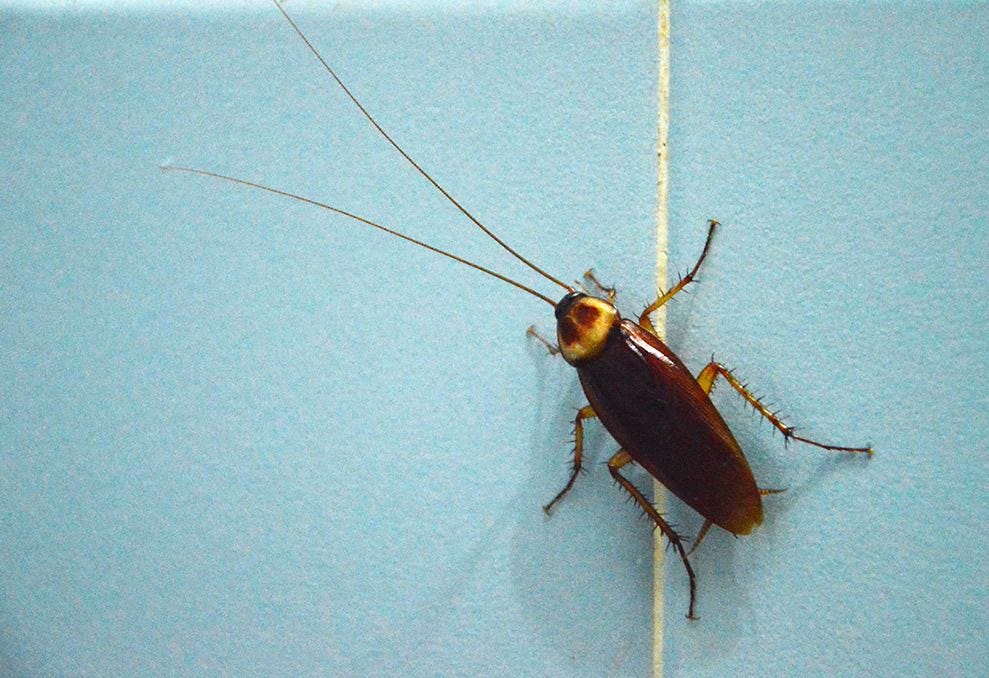Common Cockroach Species: German Cockroach

Scientists once believed the German cockroach originated in Europe, but modern research now suggests these pests came from someplace in Southeast Asia. Regardless of its origin, the species (Blattella germanica) is now considered a worldwide pest.
Eliminating an infestation of German cockroaches is possible, and to do so, it’s important to understand their habits and biology.
Appearance
Identifying a live roach can be extremely difficult because they move so fast. However, if you have an infestation in your home or business, then at some point you’re likely to come across a dead roach. To identify it, use a toothpick or a disposable plastic fork to inspect the insect’s back for identifying marks.
The characteristics that best describe a German cockroach are:
- Light brown shell with two short black strips near the head
- Two long antennae
- Six legs
- Spines on legs
- Fully developed wings (they rarely fly)
- Fast runners
- Flee when exposed to light
Habitat
German cockroaches will congregate in areas where they can find moisture, food and shelter, and our homes offer all of those. These bugs dislike strong light, so they retreat to dark spaces in the daytime or when you turn on the lights in a dark room. Their hiding places include:
- Under or inside appliances and electronic devices
- In crevices around mouldings, baseboards and trim
- In drop ceilings
- On and inside drains, pipes and conduits
- Inside furniture crevices
- In or near garbage cans and recycling bins
- Throughout bathrooms and kitchens
- Inside cabinets and cupboards
Geography
The German cockroach is a truly global species. It exists on every continent except Antarctica thanks to its ability to sneak into human dwellings where it finds warmth, shelter and food.
Reproduction
Compared to other cockroaches, the German cockroach reproduces faster and in greater numbers. It’s this fact that makes it the most pervasive roach species on the planet.
An impregnated female will develop an ootheca, an egg case containing up to 48 eggs. Prior to hatching, the female will slide the ootheca into a crevice or other sheltered area where the cockroach nymphs can safely emerge.
Although smaller and darker in color, nymphs look a lot like adult German cockroaches, and they molt six or seven times as they continue to grow. With their final molt, these cockroaches reach full size and are ready to reproduce.
Most German cockroaches live for about 100 days, and a female German cockroach can produce up to 400 eggs in her lifetime.
Diet
The German cockroach is omnivorous as it scavenges for food, meaning that it will eat just about anything – meats, starches, sugars and fats. When those food sources are in short supply, it will also eat items that are seemingly non-edible, including soap, glue and toothpaste. In truly desperate times, these insects will even turn cannibalistic, eating the wings and legs off other cockroaches.
Control Options

If you’re worried about German cockroaches in your home or business, then be sure to look to TERRO® for help. We have a number of products that can address your problem with German cockroaches, whether you need to eliminate an infestation or keep one from re-establishing itself.
Some of your options are:
- TERRO® Spider & Insect Traps- Place these traps near signs of roach activity and capture these bugs on its sticky trap surface.
- TERRO® Multi-Purpose Insect Bait- Keep annoying bugs out of your home by applying TERRO® Multi-Purpose Insect Bait around the perimeter to kill insects before they come inside.
- TERRO® Ant Dust- This waterproof powder is highly effective against cockroaches. Spread a thin layer directly into the places where you know German cockroaches are hiding. One application will keep killing cockroaches and other bugs for up to 8 months.
